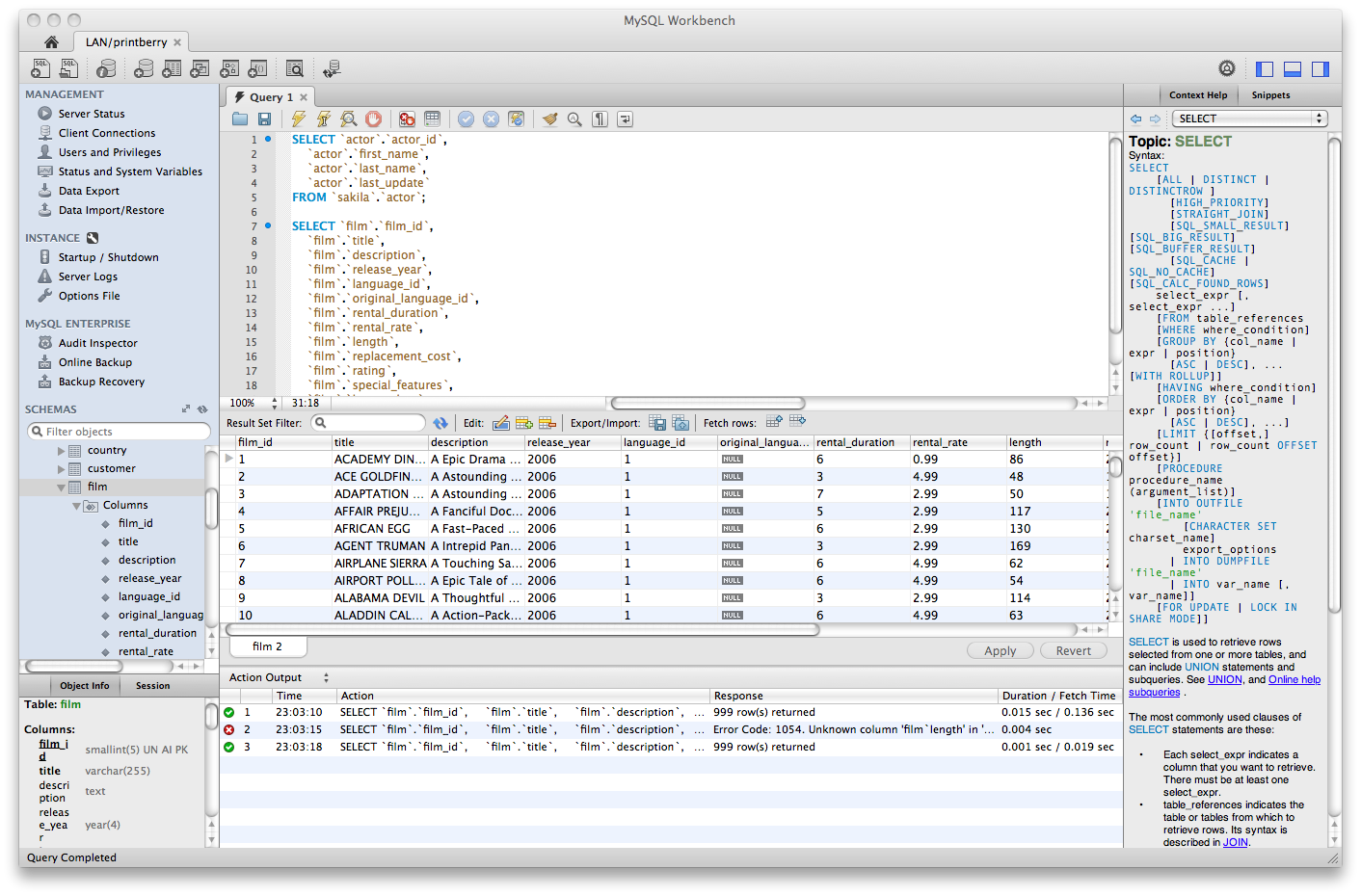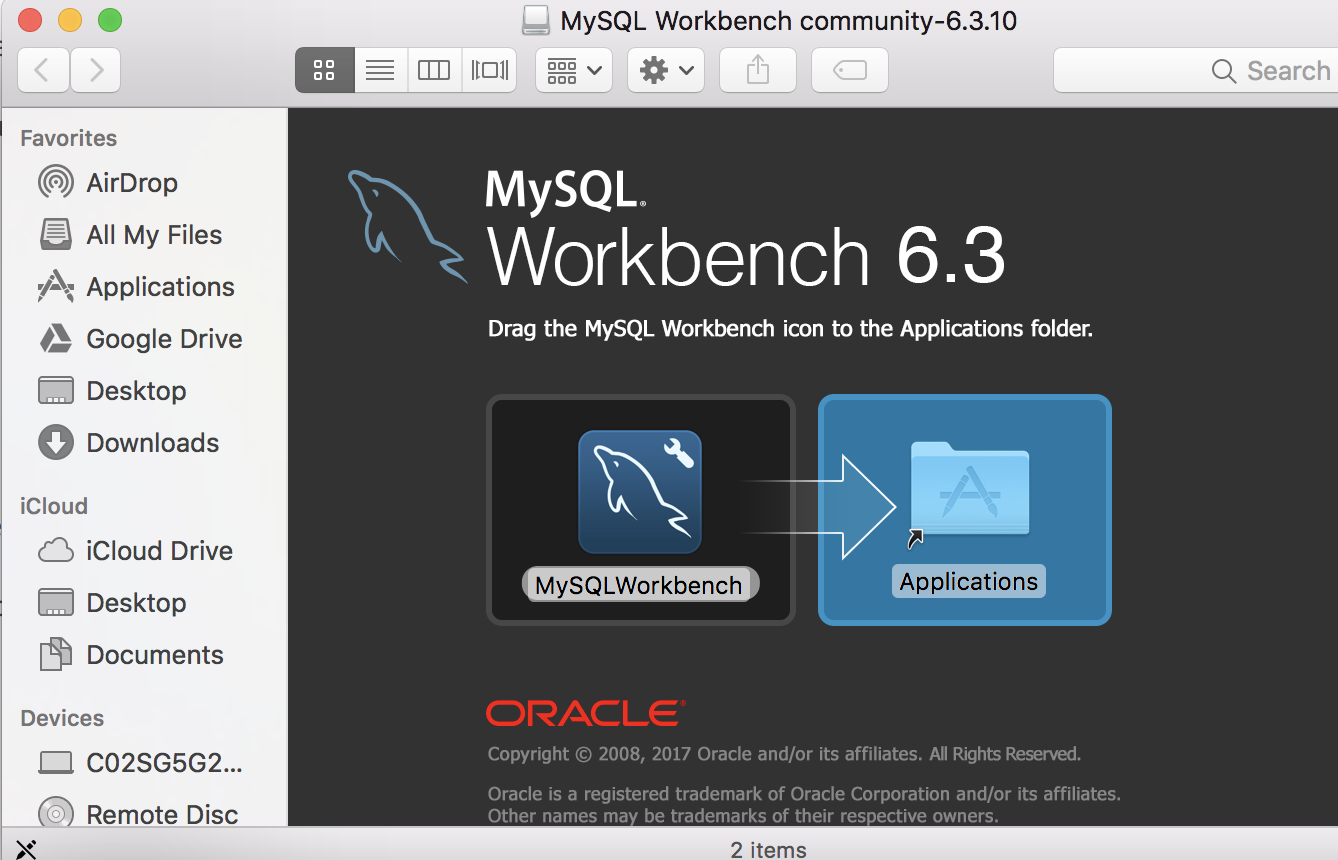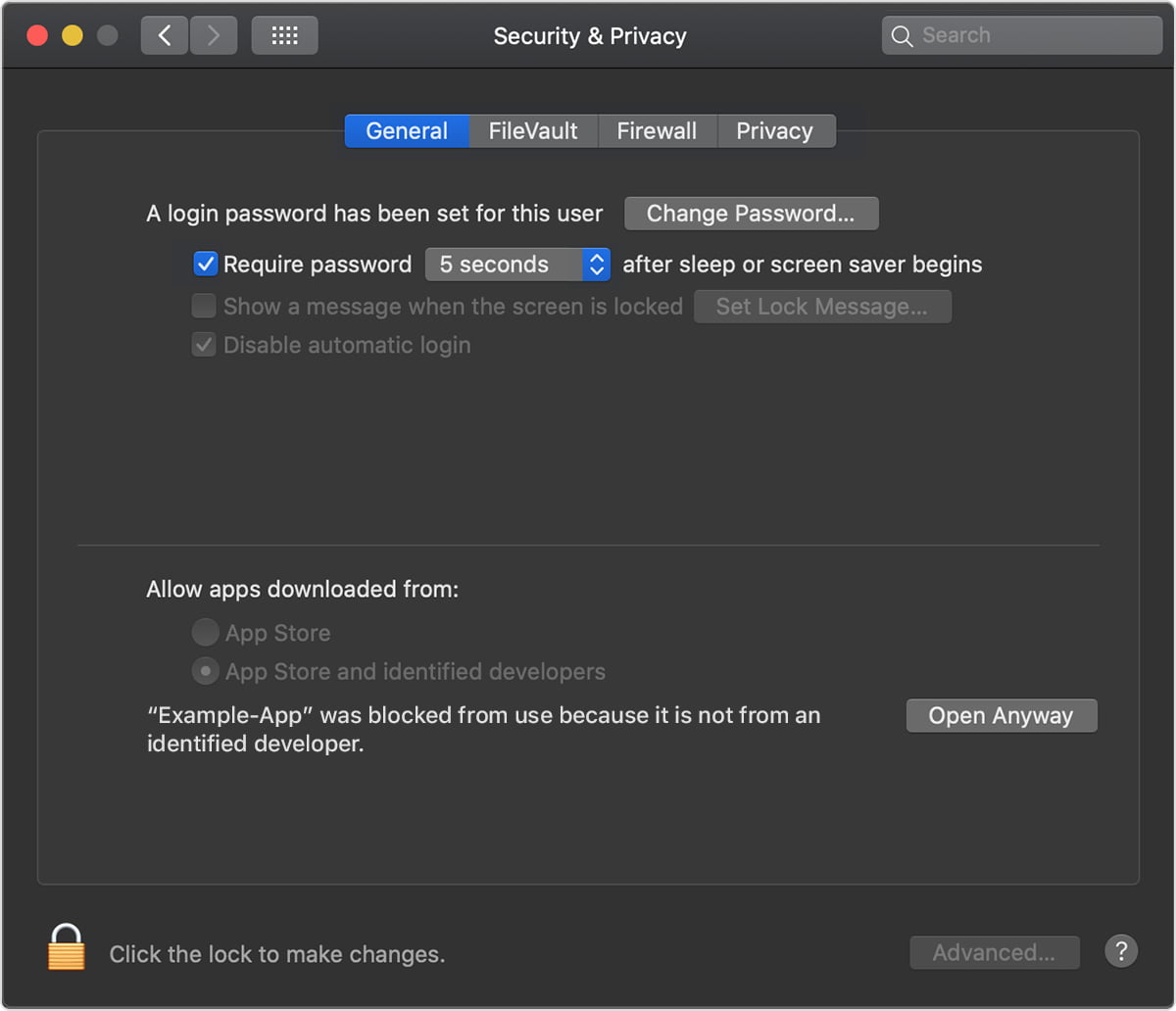Download MySQLWorkbench 8.0.26 for Mac from our software library for free. The program lies within Developer Tools, more precisely DB Tools. The most popular versions among MySQLWorkbench for Mac users are 6.2, 6.1 and 6.0. This free software for Mac OS X was originally developed by Oracle Corporation. This application's bundle is identified as. Mysql Workbench Download For Mac. MySQL Workbench now provides a complete, easy to use solution for migrating Microsoft SQL Server, Microsoft Access, Sybase ASE, PostreSQL, and other RDBMS tables, objects and data to MySQL. Developers and DBAs can quickly and easily convert existing applications to run on MySQL both on Windows and other platforms. Sep 22, 2021 Download MySQL Workbench. MySQL GUI Tool For Mac – SequelPro. SequelPro is best compatible with MAC OS X. It has powerful features such as fast and threaded UI, option of choosing among popular languages like Ruby,PHP, BASH.
MySQL GUI tools are open source relational data management and storage system. This system is popular for improving the overall functionality and quality of web applications. MySQL GUI tool is known for integrating SQL development, database design, administration, creation, and maintenance into single and useful development environment for database systems.
Related:
Here is the list of some of the best MySQL GUI tools to choose the one that gives quality results.
Download MySQL Workbench
Available under GPL License, this software provides an integrated environment for database design and modeling, SQL development, database migration and data administration. To install this ultimate tool one needs to have Microsoft NET Framework 4 Client Profile and Visual C++ redistributable for visual studio 2013 as a prerequisite for successful installation of MySQL Workbench.
Navicat for MySQL
This software is one stop solution for MySQL/ Maria DB administration and development. The software lets you connect to MySQL and Maria DB databases simultaneously within a single application. The software serves amateurs and professional a comprehensive set of tools for database development, management, and maintenance. The easy and intuitive interface makes it easy to use all its features for best results.
HeidiSQL
Loaded with numerous features this software is an open source application that uses MySQl server, Microsoft SQL databases, and Postgre SQL . The software lets you connect to multiple servers in one window, Connect via SSH tunnel, or pass SSL settings, Export from one server/database directly to another server/database, launch a parallel mysql.exe command line window using your current connection settings and a lot more with few clicks.
Other MySQL GUI Tools for Different Platforms
Different MySQL GUI tools might have different requirements for installation on various operating systems. Therefore, one must have all the necessary prerequisites for successful installation and working of any MySQL GUI tool that you choose to have on your computer. Here is the list of MySQL GUI softwares that works best with major operating systems like Windows, MAC, and Linux.
MySQL GUI Tool For Mac – SequelPro
SequelPro is best compatible with MAC OS X. It has powerful features such as fast and threaded UI, option of choosing among popular languages like Ruby,PHP, BASH or Python, it also offers powerful query editor, full MySQL support that includes table management, table triggers, printing support, creation, duplication, renaming and deletion of databases and much more is possible with this easy to use software.
MySQL GUI Tool For Windows – SQL Maestro
SQLMatero offers MySQL Tools Family that contains the premier Windows GUI front ends for MySQL management and development. This is ultimate software to create and edit databases easily. One can easily edit table or views, manage users privileges, execute queries, manage SQL scripts, manage import, export, and synchronize data.
MySQL GUI Tool For Linux – SQuirrel SQL
SQuirrel SQL is a graphical JAVA based program that enables you to view JDBC compliant database structures, browse data in the tables, issue SQL commands etc. One can extend the functionality of this software by the use of Plugins. The software offers intuitive and easy to understand interface to make the best use of its features and get desired results.
Most Popular MySQL GUI Tool of 2016 – MyDB Studio
MyDB Studio is a powerful tool to handle MySQL server administration. The software lets you create, modify or delete a database, backup or restore database, export database table info in XML, Excel and Word, synchronizes database, it can also create complete PHP scripts, create or update queries with PHP support, lets you create your own template and does much more with few clicks.
What is MySQL GUI tool?
MYSQL GUI tools have been designed for proper management and storage of data. This software are open source relational database management system and known for generating best results. These tools are best used for enhancing the quality and functionality of web applications. MySQL GUI tools integrate designing, developing, managing, creating and maintenance features into single and useful development environment for database systems.You may also see Database Design Tools
These tools let you create, edit or delete databases easily with an intuitive and fast interface. Few softwares like Heidi SQL software lets you connect to multiple servers in one window, Connect via SSH tunnel, or pass SSL settings, Export from one server/database directly to another server/database, launch a parallel mysql.exe command line window by making use of your current connection settings and much more with few clicks.You may also see Data Transfer Software
MySQL GUI tools can be used by anyone who is either new at using SQL tools or is a professional. Anyone can use them for effective database management, development and administration. MySQL GUI tools are world’s second most used relational database management system as they are open source and give quality results as per user requirements and simplify the web development process.

Related Posts
What is MySQL Workbench?
MySQL Workbench is a GUI tool to manage your database. You can see the tables, records in the table, you can create a new schema, query, etc.
Workbench Mysql Mac Os X
If you are more of a visual person who needs to deal with database (MySQL), MySQL Workbench is a very powerful and useful tool.
Before Installing MySQL Workbench on macOS
Before installing the MySQL Workbench, make sure you have access to the database. It is either db in your local system or it could be a remote database in your hosting server or even cloud database such as AWS RDS.
In this post, I will be using local MySQL server as an example. Please check out this post on installing MySQL server on your Mac.
Installing MySQL Workbench on macOS
Go to https://dev.mysql.com/downloads/workbench/
Click Download to get the DMG installer

Once Installer is downloaded, double click the installer. When you double clicked, you should see the screen like below. Follow the instruction to drag the MySQL Workbench icon to the Application folder to complete the installation of MySQL Workbench into your system.
Launching the MySQL Workbench App
Once the MySQL Workbench is installed and when you try to open the app, you might see the message like below. Press Open to proceed on launching the application.
Once the start up screen shows up, you will see a connection already added (assuming you have installed local MySQL server)
Click the Local instance 3306. It will ask for the password. Enter the password you entered when you set up the local MySQL server and press OK. (You can check the Save password in keychain. In this way you do not need to type the password every time you access to your database)
Creating the Schema
Now you have access to your local database server (MySQL server). You can start creating your own database. Schema is the main container of database where you put the tables. Let’s try to create a schema. Click the Create New Schema icon (highlight in below screenshot)

Assign some name on your new schema. In this example, let’s use test_db as a schema name and press Apply.
You will see a dialog box to review the SQL Script to execute by an app. Basically, it will execute an SQL statement of CREATE SCHEMA `test_db`;
Press Apply to create a new schema.
Select Schemas tab and verify the new schema is added.

Creating the Table
Once schema is created, you need to create a table to actually store the data in the “database”.

Expand the test_db schema and right click on the table.
Select Create Table...
Start entering values in the column section. This will be the identifier for the specific field in the database.
Enter the following entities in the table.
PK - Primary Key. Usually the “id” will be your primary key.
NN - Not Null. For entities, you don’t not want to have Null value (empty value) by the time the record is inserted. Put check on this if there is a specific entity you want have some value on it. For example, id entity must have a value always. So for id, put check on NN.
UQ - Unique. If the record entered in the table needs to be unique, put check on this. For example, “id” must be unique so that when you query for specific id, it will only return 1 result.
BIN - Binary
UN - Unsigned
ZF - ZeroFill
AI - Auto Increment. For values you want to automatically increment, put check on this. Typically id should have auto increment on. So every time there is a new record added, the id value will auto increment.
G - Generated
Press Apply and you will the above confirmation. Press Apply again to add some records in your table.
Go to your schema, and expand the table. You should be able to see the table you just created.
Access to the Table
Mysql Workbench Download For Mac High Sierra
To view the table you created, go to the table you created.
Right click and select Select Rows - Limit 1000
At this point, the table has 0 record. This is expected since the table has just created.
Adding Sample Records
Once you have your table opened, you can directly add some records to it by simply double click the columns. Try entering the following records as an example and press Apply.
Press Apply to confirm the records you want to add in the table.
Note: You can leave the id column blank since this column is set to auto increment. It will automatically assign value as a new record is added.
Now you can see there are 2 records added in your table. You can see the id is automatically added in ascending value.
If you are using Big Sur on Apple’s new Silicon M1, checkout Using MySQL Workbench on macOS Big Sur blog post.
Comments are closed.